|
I would like to thank HMG members Imogen and Douglas
Lyndon-Skeggs who invited us to Soberton Mill on 14
January 2018 to show us the sluice repairs and
newly-dredged headrace, which has enabled the mill
to regain its water supply. They very patiently
also let us re-visit the mill and take a few photos.
This Georgian mill (below left) is unusual because,
although being unrestored, it is securely roofed and
moderately safe to enter. The milling machinery is
long gone, but a few tantalising clues to its
configuration remain.
|
 |
 |
|
We entered the stones floor (above right) from the
gravel drive outside the much altered and enlarged
mill house, and descended to the flour floor where
we found our first curiosity. The ladder from the
stones floor descends into a circular brick
compartment (below left). This feature is most
unusual for an English mill. It looks as if it
might once have housed the wallower and great spur
wheel. The brick section supports the bearings and
tentering gear for two stone spindles (below
right). We do not understand the purpose of the
windows, but they may have been added after the
milling machinery was removed.
|
 |
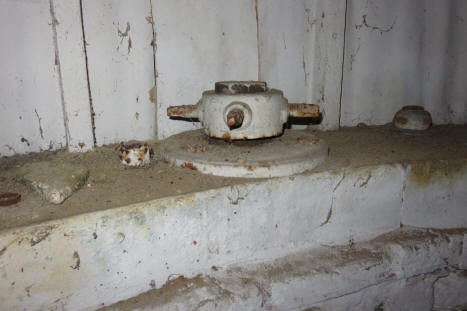 |
|
Outside the circular feature there are pulleys for
belts from the Armfield turbine which was installed
in the early 1930s in the external wheel pit. It
occurred to me later looking at my photos that the
original wooden floor at this level was missing,
exposing what looks like it could have been an older
waterway or even a wheel pit.
We then ascended to the bin floor (below left) where
things were much more familiar. As Imogen pointed
out, the massive timbers throughout the mill are
once again from a wooden ship (think Chesapeake) and
there are several interesting initials and dates,
for example ‘DB 1848’, ‘J Cal 1888’, and ‘R Smith’
(below right).
|
 |
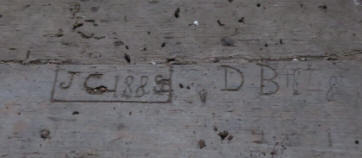
 |
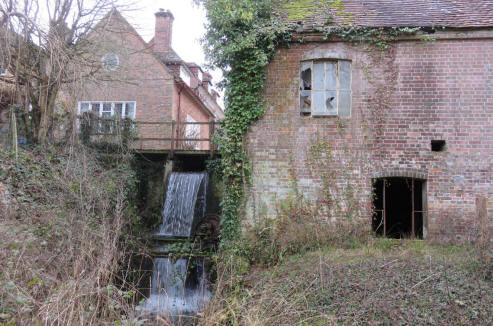 |
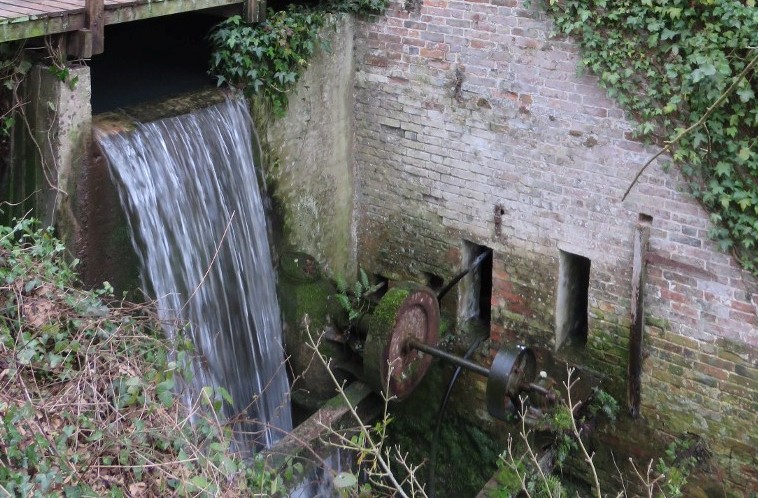 |
|
Imogen and Douglas aim to install a turbine and
generate electricity but for now the old turbine (a
12inch single-head side gate ‘River Patent’ Armfield)
is clearly visible below the newly-invigorated
waterfall in the wheel pit (above). Imogen tells me
that the turbine and a generator was installed by
Bernard Wharburton-Lee, the first VC of the second
world war, who was a massive enthusiast and lived at
the mill house. He died at Narvik in 1940 aged 44
and is buried in Norway. He was the last person to
do restoration work of any note on the millstream.
He straightened and concrete-lined the part of the
leat close to the house and made extensive tunnels
for the waterways under the drive to pass water
through the turbine or overflow through a channel
and then back into the river downstream. The
generator produced the first electricity for the
house and the turbine was later turned into a
water-pump to boost the low water pressure in the
house.
|
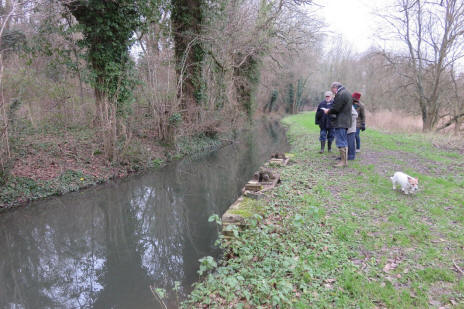 |
 |
|
Having satisfied ourselves with the mill, Imogen and
Douglas and the dogs took us a walk up the very long
embanked Tudor head race. The original mill was
built well above the flood plain of the Meon and the
leat was utilised for water meadows.
In the past, dredging was done by horses dragging
square chains to raise the silt and flush it
downstream. These chains are still in the mill (below
left). Over
the years the leat had become very silted-up and the
sluices had decayed.
|
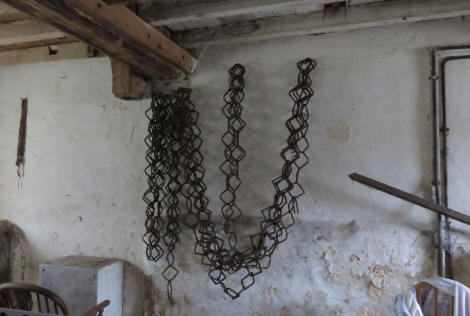 |
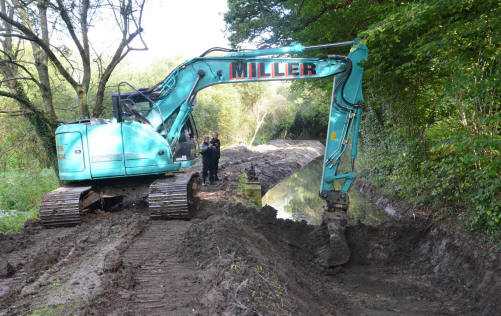 |
|
Walking up the embankment now, it is very hard to
believe the amount of work that went into dredging
the channel. The masses of silt dredged out of the
waterway have been cleverly contoured to look like
part of the embankment. The
difficulty in using a digger is the need to avoid
piercing the clay lining. The
picture above right shows the final moment when the
earth dam holding back the water was about to be
removed. |
 |
 |
|
One of the reasons that the mill lost its water
supply was that the sluice to the water meadows
decayed. The embankment was strengthened and the
site of the sluice reinforced.
Much of the work was done by the river-keeper who
trained at Sparsholt. He also works on the Kennet
and Avon Canal and salvaged some of the sluice works
for the vertical sluice gates from the waste bins of
the canal. They were restored by the blacksmith in
Farringdon and installed on-site by him. The
work also included completely rebuilding a brick
spillway. |
 |
 |
